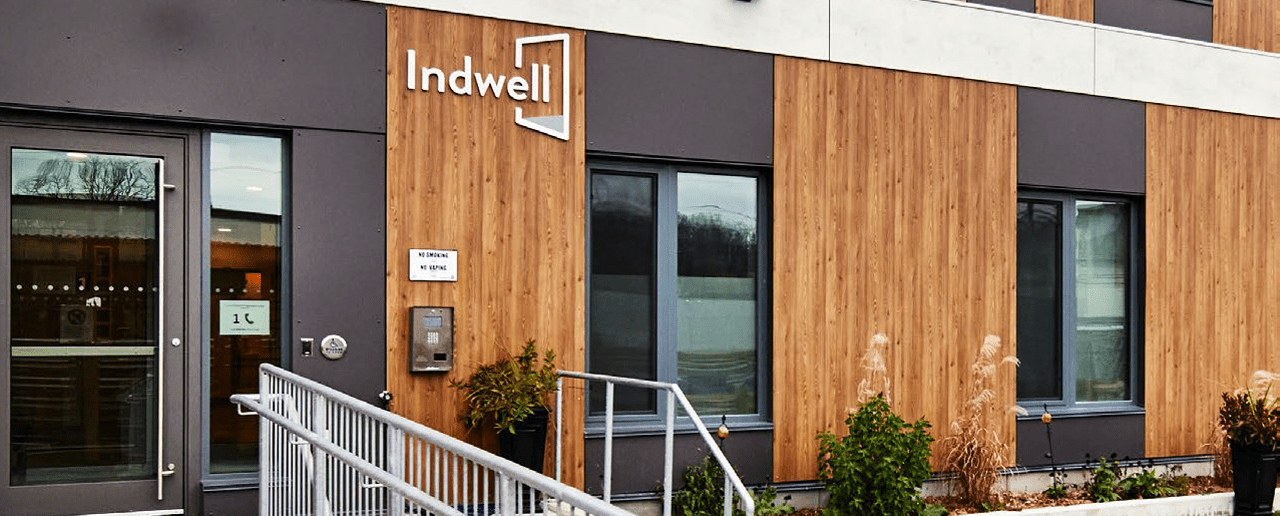Airtightness testing delivers energy and cost savings
Dogwood Suites is a 35,157 sq. ft. mixed-use building in Simcoe, Ont., with 51 affordable and market-rate rental apartments. The developer is Indwell, a Christian charity that has been supporting vulnerable adults dealing with mental health issues for nearly 50 years and one of the fastest-growing developers of new supportive affordable housing in Ontario.
By performing building envelope airtightness testing as part of the Enbridge Gas Commercial Airtightness Testing program, they were able to significantly reduce air leakage and annual heating loads.
Highlights
-
Indwell participating in the Enbridge Gas Commercial Airtightness Testing program and benefited with lower operating costs over the lifetime of the building.
-
The program provided more sustainable and resilient building that has a lower carbon footprint and reduction in air leaks providing healthy indoor air and control of heating and cooling loads.
By the numbers†
81%
reduction in air infiltration
43%
reduction in annual heating load
35,157
square feet
3
storeys

“As airtightness testing moves towards mandatory, the Enbridge Gas program is helping builders and developers know what to do and how to implement the process before it becomes code.”
Austin Todd, Principal Consultant,
Evergreen Building Science Inc.
Collaborating to achieve performance standards
Indwell worked with Evergreen Building Science Inc. and Schilthuis Construction Inc. to plan for and perform building airtightness testing as part of their quality control process.
“Airtightness testing, also known as a blower door test, is a procedure to measure the airtightness of a building envelope,” says Austin Todd, Principal Consultant, Evergreen Building Science Inc. “We use portable fans to create a controlled pressure difference from the inside to the outside of a building. That controlled pressure difference forces air through any gaps or cracks that may be there. The blower door fans quantify the air leakage rate. Then we use additional specialized equipment, such as fog machines and thermal imaging cameras, to locate the sources of air leakage. The total airflow rate is a very good predictor of building envelope performance and highlights vulnerabilities in the building envelope.”
Identifying and remediating air leaks
To minimize disruption, the Dogwood Suites testing was scheduled for a Friday afternoon when trade activity is typically low. The testing took 5.5 hours and diagnostics revealed numerous air leaks around door frames, window rough openings, kitchen range hoods, open conduits on the exterior and through the sump-pit, among other very common areas. After the sources of air leakage were identified, Schilthuis sealed the holes with specialized tape and membranes to further reduce the air leakage rate and ensure a healthier, more durable structure throughout the lifetime of the building.
“ As building owners and municipalities are now requesting high-performance buildings, we’re seeing more and more builders and developers step up and perform airtightness testing.”
Austin Todd, Principal Consultant,
Evergreen Building Science Inc.
More sustainable, durable buildings
“The main advantage of performing airtightness testing while the air barrier system is still exposed is the opportunity to make significant improvements without more costly, disruptive measures,” says Todd. “This is especially relevant if your building is trying to meet municipal or certification requirements.” As soon as the primary air barrier system is covered by either interior finishes or cladding, the opportunity to reduce the air leakage rate is greatly diminished.
“Participating in the Enbridge Gas program gives builders and developers the confidence and experience to bid on and deliver future high-performance projects,” says Todd. “It allows construction teams to develop their own best practices on implementing and airtightness testing quality control processes.”
New construction projects 25,000 square feet and over may qualify:
- Commercial
- Institutional
- Multi-residential